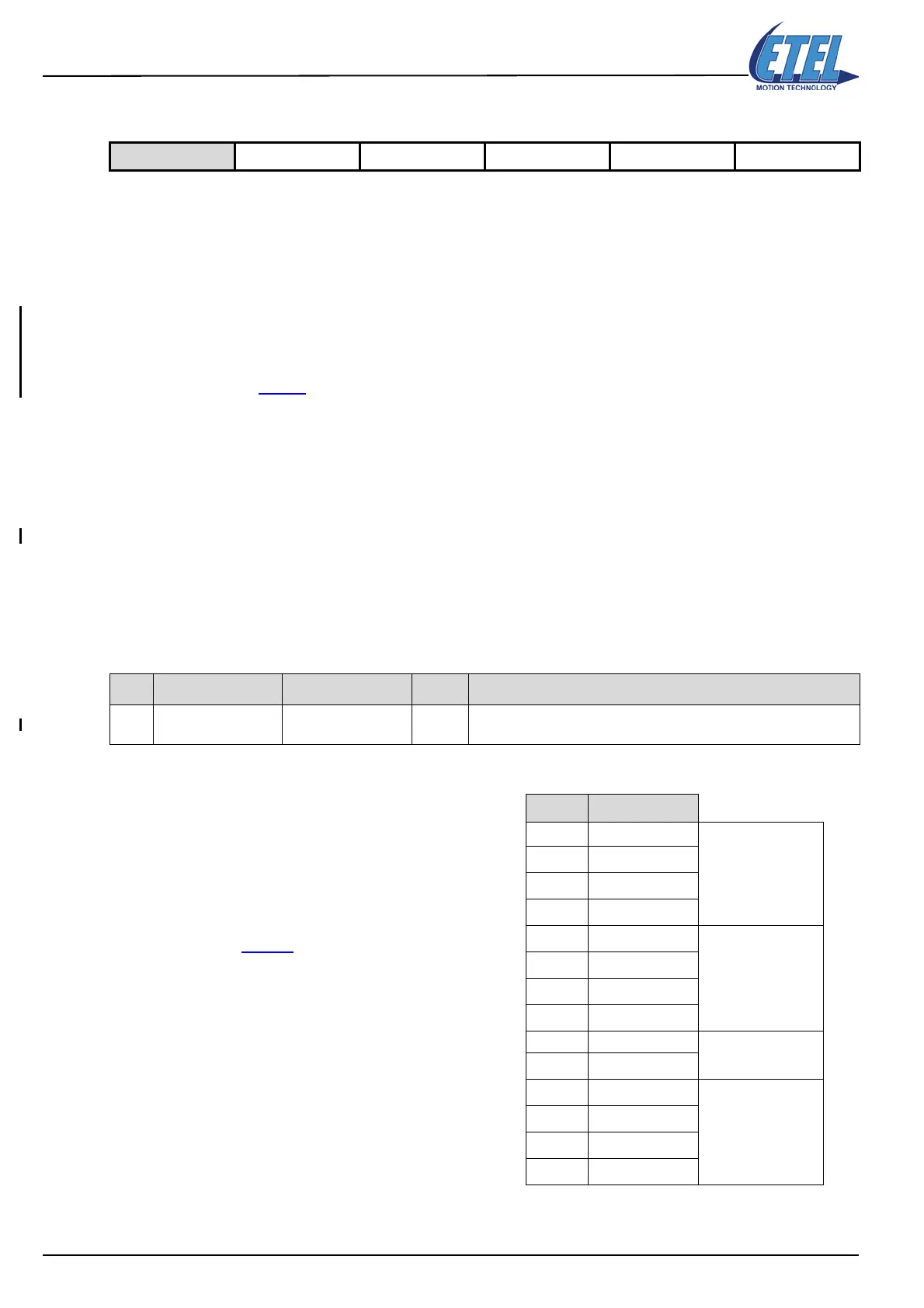Operation & Software Manual
194
Direct Drives & Systems
Chapter C: System functions ETEL Doc. - Operation & Software Manual # DSC2P 903 / Ver. F / 3/6/05
13.9 Triggers
13.9.1 Principle
The trigger function is interesting if the system of the user has to specifically react when the theoretical
trajectory (monitoring M6) reaches defined positions. This is available with the standard reference mode
(K61=1). With the triggers, the controller may induce two effects, according to the theoretical trajectory:
• Modification of the state of one or more controller or optional board's (DSO-HIO) digital outputs (refer to
the corresponding ’Hardware Manual’ to know the number of the digital outputs present).
• And/or modification of bits# 8-15 of ’Status Drive’ SD2 (monitoring M61) and bits# 0-15 of monitoring M63.
Remark: Refer to §13.11
for more information about SD2 (monitoring M61) and monitoring M63.
Triggers are programmed in tabular form. Every line represents a trigger describing the action induced by the
controller when a defined position [upi] is reached.
There are 3 types of triggers: positive triggers, negative triggers and bidirectional triggers. The first is
activated only when the motor goes past the requested position with a local positive movement. The second
one is activated with a negative local movement and the third one is activated at each time whatever the
movement direction. Using simultaneously 192 triggers is possible. They can be subdivided into groups called
’mapping’ (parameter K187 or TNB alias command).
13.9.2 Mappings definition
To program triggers, the first operation is to define the mappings with parameter K187 (or TNB alias
command). A mapping is a group of triggers active during a given time (active during a movement, eg.).
When this operation is completed, the triggers table format is defined.
Example:
The opposite table shows the structure of a triggers
table. The table is divided into mappings. In this
example, they are 4 triggers per mapping
(TNB.#=4).
The TRS command can select another mapping for
each movement and therefore use a different group
of triggers (refer to §13.9.6
for more information).
Available on DSC2P DSC2V DSCDP DSCDL DSCDM
K Alias Name <p1> Comment
K187 TNB.<axis> = <p1> Trigger mapping size 0-192 Number of triggers (or events) per mapping
Position Triggers table
0
E
0
Mapping #0
1
E
1
2E
2
3E
3
4E
4
Mapping #1
5E
5
6E
6
7E
7
... ...
...
... ...
189 ...
Last mapping
190 ...
191 E
191
192 E
192

